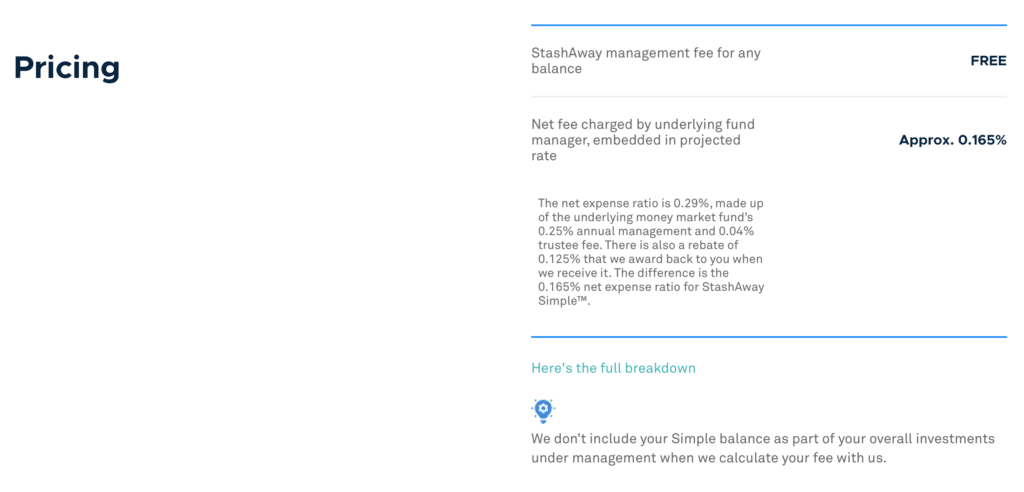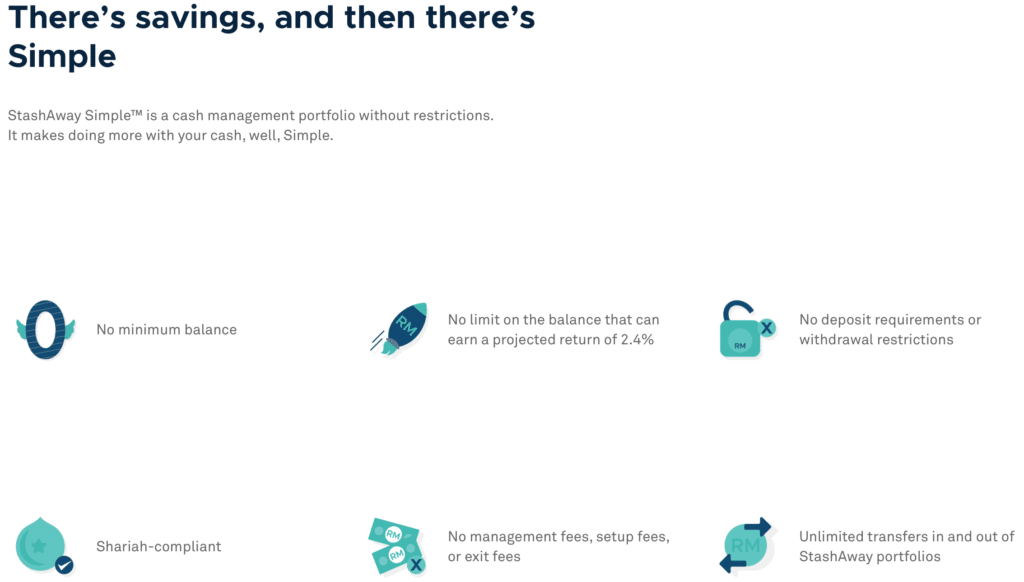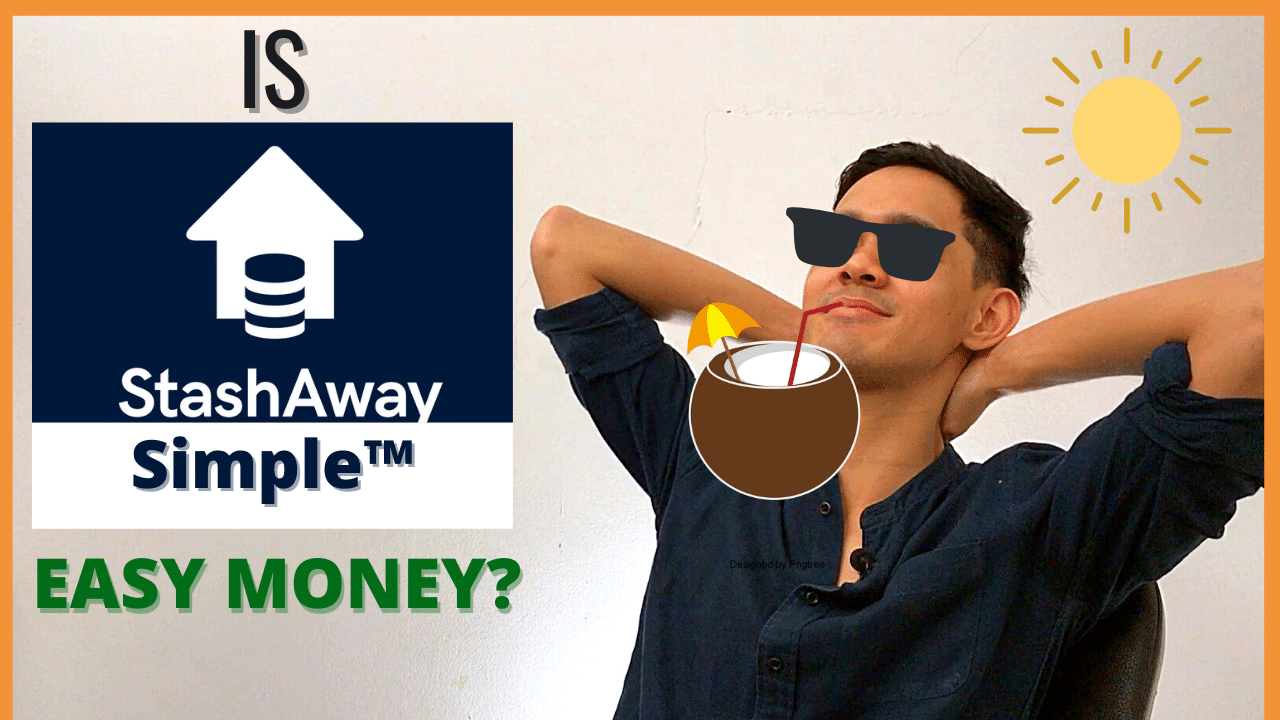Table of Contents
In this article, we go through:
- StashAway Simple compared to Fixed Deposits
- What is StashAway Simple?
- StashAway Simple risks & returns
- StashAway Simple fees, withdrawals & minimum deposits
- And more!
StashAway Simple is here!
If you’re new to StashAway, check out my review on their investment product here.
When we first started using StashAway in February, we heard that StashAway would be releasing a money management product, but we could never find it in the app.
Being a risk taking investor, we didn’t mind too much.
We didn’t think we’d use a cash management product anyway. What’s the point, right?
Well, we finally got their launch email on the 15th of June, so we thought we’d give it a read and see what it’s all about.
After diving into the product features we understand why someone would use this now.
It’s a great product that works like a fixed deposit, but better in some ways and worse in others.
To prepare for this article, we’ve decided to put in RM150 into StashAway Simple because first-hand experience is best!
Before going into this, we thought we’d give a brief overview of what fixed deposits are since we’ll be using it as a comparison throughout this article.
What Are Fixed Deposits?
In layman’s terms, fixed deposits are… fixed deposits.
It’s money you leave in a bank for a certain period of time, from a few months to a few years, in which you promise not to withdraw the money.
In return, the bank will pay you an interest that’s higher than a standard savings account.
Why would banks do this?
It’s because they want certainty in cash flow.
If you put RM1,000 savings account, the bank would feel uncomfortable loaning this out because what if you withdraw it all next week?
On the other hand, placing a fixed deposit is essentially you telling the bank: “I’ll be depositing this with you for 12 months and in return I want higher interest rates.”
Fair deal.
The bank is fine with that since it gives them certainty in cash flow! It’s probably one of the major concerns for them anyway.
To learn more about Fixed Deposits and the interest rates behind it, you can read this article.
What Is StashAway Simple?
Despite its similarities to fixed deposits, StashAway Simple is considered as an investment, not a deposit.
This means that it’s not PIDM secured, which means that you can lose the money you put in here.
StashAway Simple Risks
To understand the risks of this, let’s take a look at where this money goes.
100% of deposits put into StashAway Simple goes to Eastspring Investments Islamic Income Fund.
The Fund seeks to provide liquidity and a steady income stream by investing in Islamic money market instruments and/or Islamic Deposits.
Looking at their holdings, 60% of it are placements in Ambank, RHB, & Public Islamic Bank.
This means that you only risk losing your money if these banks go bankrupt.
If they do… then we have much bigger problems don’t we?
Volatility of this fund is extremely low and the price hasn’t even moved by 0.01% since 2009.
This is a key factor because unlike equities, the value of your investment won’t fluctuate by a few percentage points each day.
Why is this important?
Due to the combination of low risk & volatility, this will more likely be used as a short-term savings account or emergency fund stash.
With regards to risk, StashAway simple is slightly more risky and volatile compared to Fixed Deposits.
However, the small amounts of risk we’re facing may be worth it if StashAway Simple can perform better in other aspects.
This leads us to our next comparison, returns.
StashAway Simple Returns
StashAway Simple’s main fund has returned 3.46% over the last year & 19.65% or nearly 4% annually over the last 5 years.
These are incredible numbers for a low risk/low volatility investment.
The returns are distributed to investors at least once a month, which means that you’re gonna be getting a monthly income from them!
Over the past year, they have returned between 0.25-0.31% per month, or RM25-RM31 on a RM10,000 investment.
However, it is incredibly important to note that these returns are heavily reliant on Bank Negara’s interest rates.
Due to the current circumstances in 2020 and the need of an economic boost, Bank Negara has decided to lower interest rates this year which would translate to lower payouts. Just keep this in mind!
This is probably the reason why StashAway projects a 2.4% annualized return against the higher historical average.
As of April & May 2020, the fund doesn’t seem to have reduced it’s distribution yet, so good signs!
When compared to Fixed Deposits, banks generally give returns of 2-3%.
The difference isn’t significant but a gain is still a gain right?
The more money you have invested, the larger the difference.
The main benefit of StashAway Simple however, is in it’s flexibility.
StashAway Simple Flexibility & Withdrawals
When you put your money in Fixed Deposits, you’re committing to leaving that money there with the bank for a certain amount of time.
This ranges from 1 month to 5 years.
The catch is that Fixed Deposits usually come with a lock in period — a minimum amount of notice or time that is required for you to get your interest.
Let’s say you put RM1,000 in a fixed deposit for 6 months.
After the second month, an emergency comes up and you need the cash immediately.
The bank will either pay less than the prorated interest or even no interest at all.
In contrast, StashAway simple has no lock-in period and you’re free to withdraw at any time with no penalty!
In the same scenario, you’d be getting 2 full months worth of interest AND you can withdraw it easily.
It should take between 1-3 business days to withdraw your money.
In terms of flexibility and withdrawals, StashAway Simple is far superior when compared to traditional fixed deposits.
It gives you flexibility in depositing and withdrawing which makes this a great low risk investment.
StashAway Simple Fees
StashAway doesn’t charge anything for using this product!
I wonder why they’re doing this?
Most probably to get new users comfortable with the platform and eventually “upsell” them to their higher risk portfolios.

If that wasn’t enough, StashAway is also passing on some rebates they’re getting from Eastspring.
On their side, there is an annual fee of 0.165%.
To us, this is not a big deal as the 3-4% returns we mentioned earlier is after fees.
We don’t mind paying fees if we’re getting a good deal out of it, right?
StashAway Simple — Other Considerations
StashAway Simple is also Shariah Compliant!
There’s no minimum balance or minimum deposits that you need to place which makes all this even more flexible!
You can also transfer your money to & from your StashAway investment portfolios, which is nice to have.
This means you can move your funds from your investments to StashAway Simple if you feel like your investments are getting too volatile.

How To Use StashAway Simple
StashAway Simple is a great tool for you to start building an emergency fund.
With it’s flexibility of withdrawals, no minimum deposits and low-risk nature, it would definitely be our go-to emergency fund if we didn’t have access to Amanah Saham.
You can also use it to get slight rebates on your credit cards or electricity bills if you prepare for it. Watch our video review of StashAway Simple to find out how to do this.
StashAway Simple Final Thoughts
StashAway Simple is a great addition to the StashAway service portfolio.
It’s low-risk, easy to withdraw, has no minimum deposits and is Shariah Compliant!
When compared head-to-head with Fixed Deposits, StashAway Simple comes out on top by being more flexible while providing similar or even better returns.
If you’re looking for a safe, flexible and ethical place to store your emergency funds, or if you want to park your money somewhere for a short time while having almost instant access to it, StashAway Simple is definitely something you should consider.
For more info about StashAway Simple, like how they calculate returns, a full breakdown of their fees, and FAQs, you can visit their website here.
If you enjoyed reading this article, share it with your friends & family! We’d really appreciate the love & support 🙂
Read these articles next:

